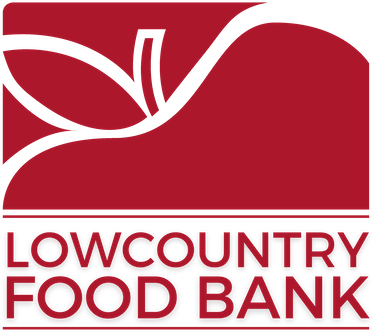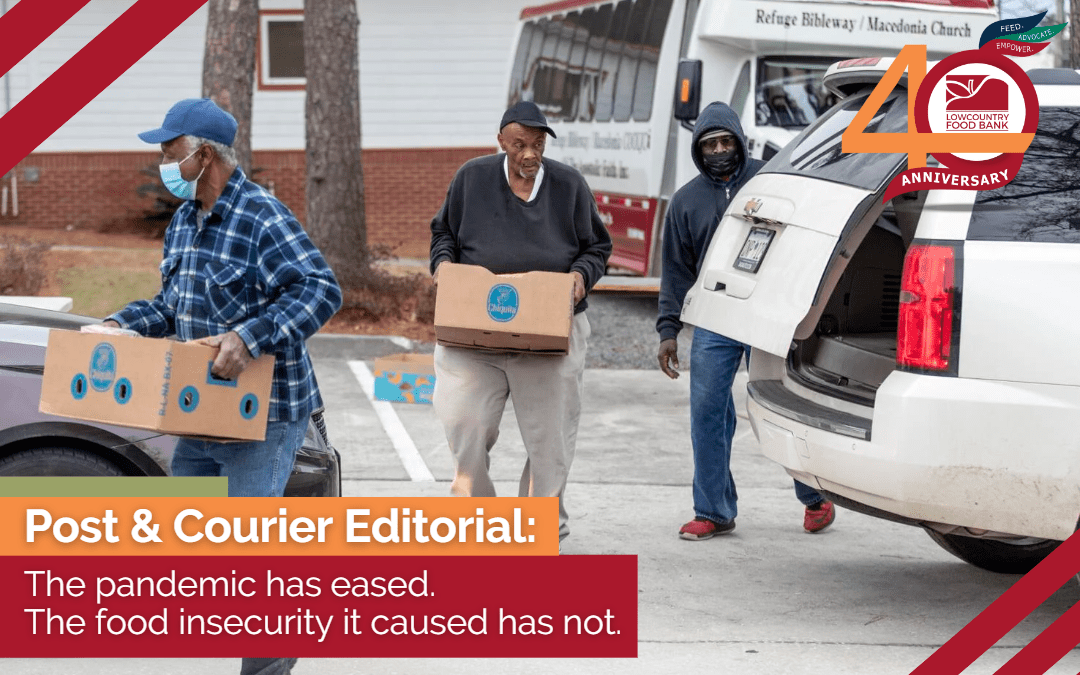By Post & Courier Editorial Staff
We should be grateful that the Lowcountry Food Bank and similar groups across the country rose to the challenge during the pandemic and helped provide healthy food to those in need. That challenge remains with us even as COVID-19 has receded, so all of us should continue to do our part to help address that need.
This past November and December broke records for the largest amounts of food distributed by the Lowcountry Food Bank, with more than 4 millions pound given out in each of those months in the 10 coastal counties it serves. “We’re still seeing the same level of demand, the same level of need,” CEO Nick Osborne tells us, adding that continued inflation and the recent end of federal Supplemental Nutrition Assistance Program benefits in South Carolina mean demand is unlikely to fall anytime soon. A recent visitor to the food bank’s main site off Azalea Avenue said he soon would have to choose between buying medicine or food.
There are ways we can help, including by donating dollars or volunteer hours directly to the Lowcountry Food Bank and spreading the word that the need is real.
Those involved in addressing hunger and promoting better nutrition realize how connected their efforts are. Private donations alone cannot be expected to erase these problems, so federal support will continue to play a key role, along with the successful operation of food banks and their partners in distributing food. Mr. Osborne notes that for every meal the food bank provides, nine meals are provided through the existing SNAP program.
We call on South Carolina’s congressional leaders to make sure the upcoming farm bill includes continued support for not only the SNAP program but also the Emergency Food Assistance Program and the Commodity Supplemental Food Program, both of which complement the work of local food banks and pantries. Congress needs to ensure continued financial support and consider other tweaks to make sure these programs run efficiently and effectively. There is a particular need to simplify the overly complicated SNAP enrollment process.
It’s important that no one feel discouraged, because we are making progress. The challenge of food insecurity goes beyond making sure people have food to eat: They also need the right kind of food, which is less likely to cause obesity and other health problems. The Lowcountry Food Bank has expanded its partnerships with coastal growers and begun creative moves such as placing refrigerated containers in rural counties, all in an effort to distribute more healthy, local produce.
The amount of fresh produce distributed has grown accordingly, not only in terms of total pounds but also as a percentage of the bank’s overall food distribution. It’s up to almost 40% now. Meanwhile, we’re encouraged to see the Food Bank receive a $496,908 grant from Feeding America, the nation’s largest hunger-relief organization, to partner with Gullah Farmers Cooperative to address root causes of hunger and food insecurity in the Lowcountry.
Clemson and state agencies last year unveiled a helpful statewide interactive food resource map, tig.rs/foodmap, showing the location of more than 900 meal and grocery options, as well as the location of DHEC, Department of Social Services and United Way offices. Reducing the number of so-called food deserts — places where the nearest grocery store is far away — also is part of the complex and interwoven challenge of ensuring we all have healthy food to eat.
It’s important that we continue to work on this challenge, because food insecurity can exacerbate poverty, unemployment and health and educational struggles. Our coastal counties have more than 160,000 people who struggle to find healthy food on any given day, and more than 25% of them are children.
So from those serving in Congress to those volunteering in their own neighborhood, we should help ensure that people in need know where their next meal is coming from and that the food will help them lead healthier, more productive lives.
This article was originally published on postandcourier.com on March 23, 2023. Photo: Wally Tucker, Harvey White and Minister Derrick Glover (from left) carry out boxes of food for distribution with the Lowcountry Food Bank at Refuge Bibleway Church in Summerville. Photography: Henry Taylor, P&C Staff
About the Lowcountry Food Bank: Feed. Advocate. Empower.
The Lowcountry Food Bank serves the 10 coastal counties of South Carolina and distributed more than 40 million pounds of food in 2021. The Lowcountry Food Bank helps fight hunger by distributing food to more than 250 partner agencies including on-site meal programs, homeless shelters and emergency food pantries. The Lowcountry Food Bank advocates on behalf of those who experience hunger and helps empower people to make healthy and nutritious food choices. For more information, visit the Lowcountry Food Bank website.


Recent Comments